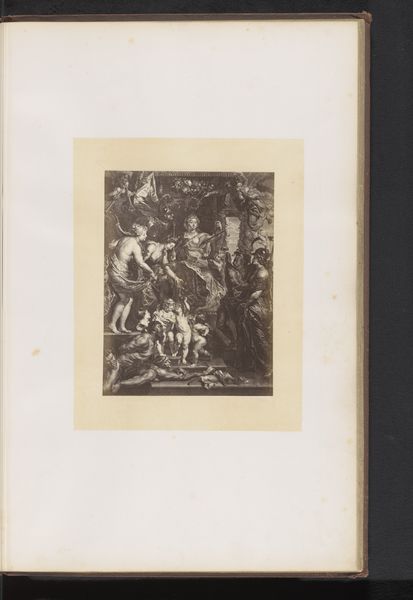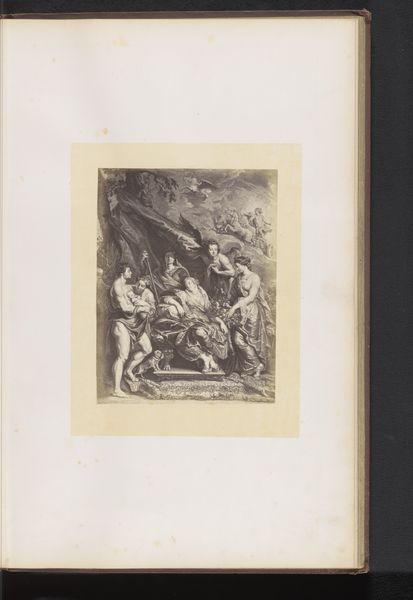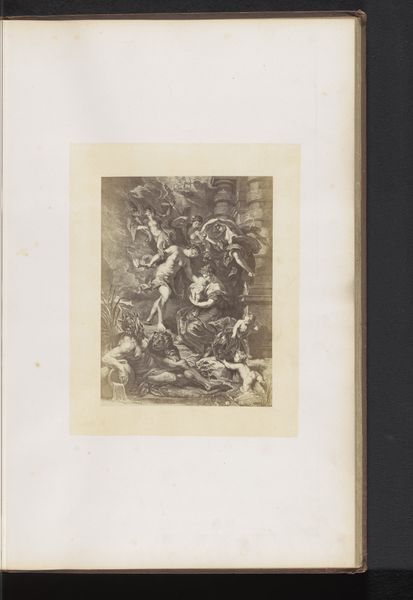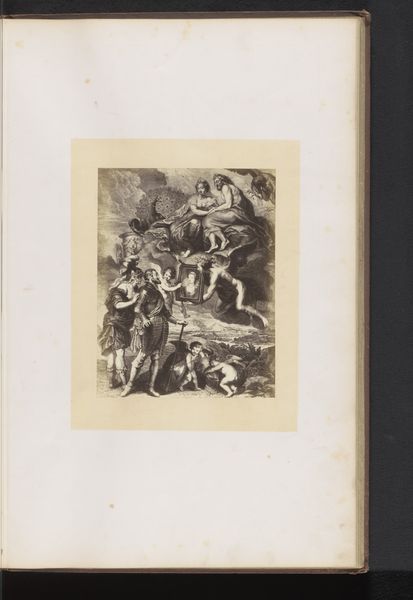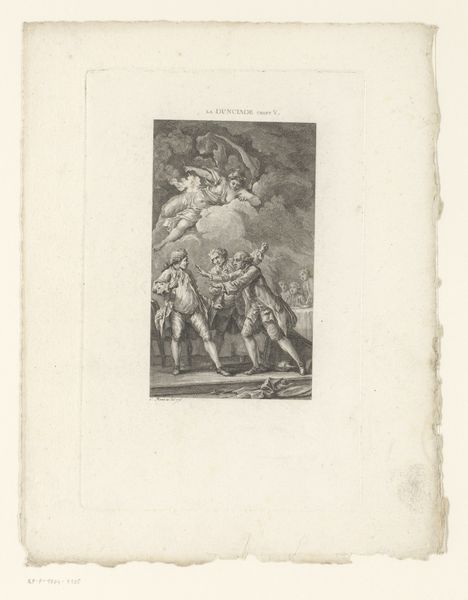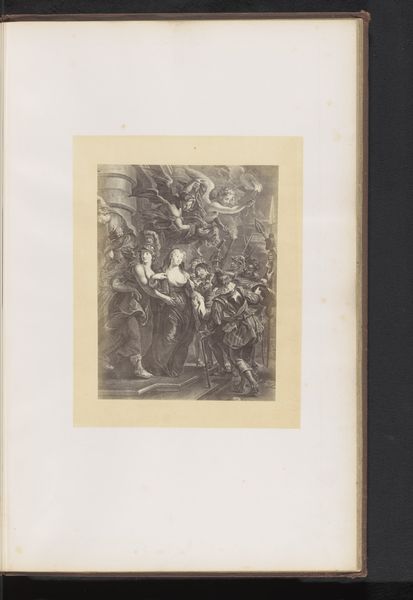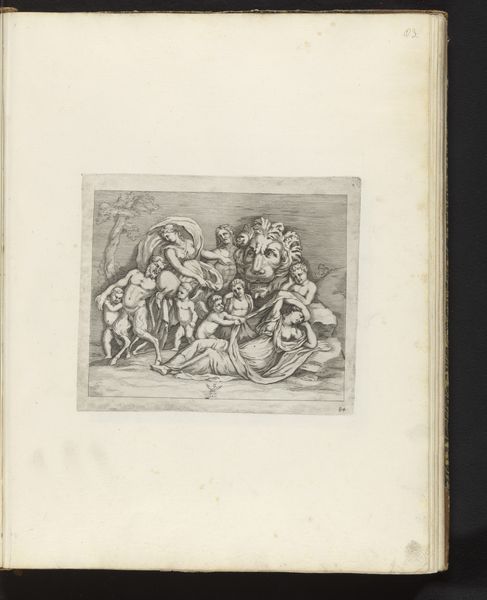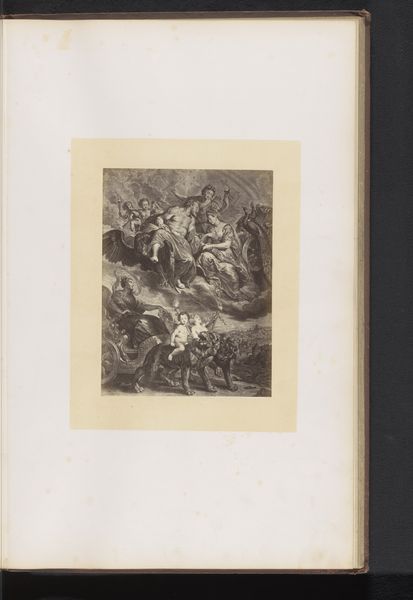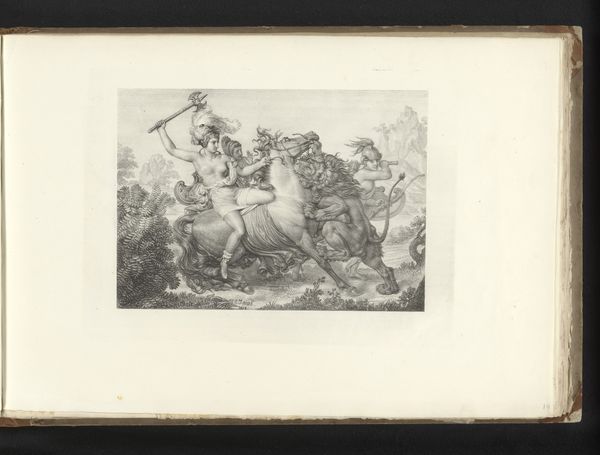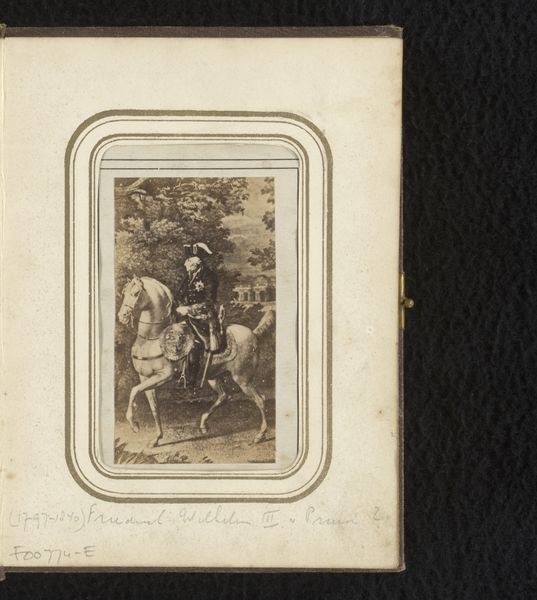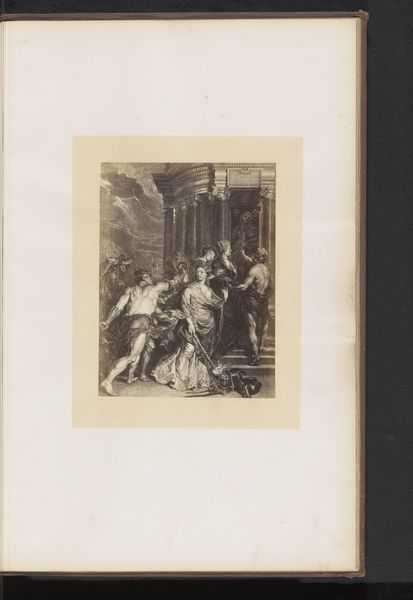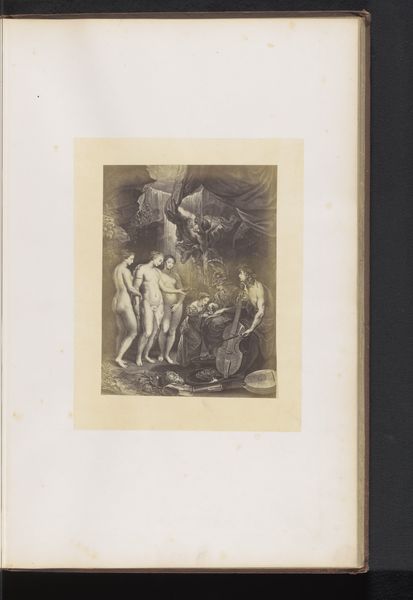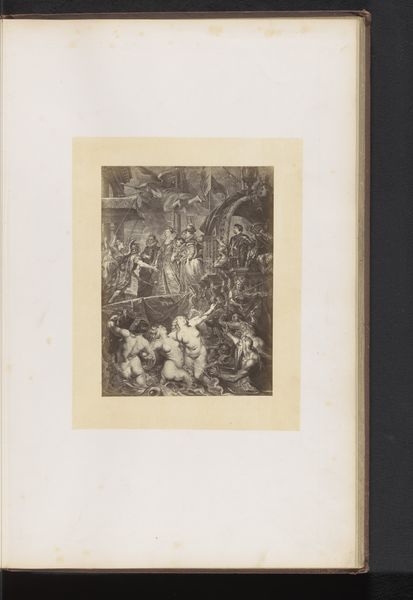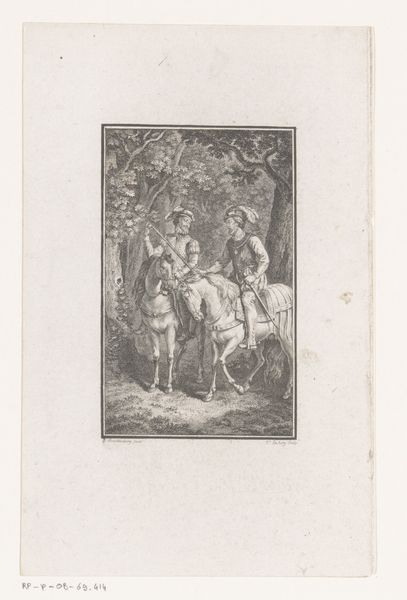
Fotoreproductie van een gravure van De intocht van Jüloch door Jean-Marc Nattier, naar het schilderij door Peter Paul Rubens before 1864
0:00
0:00
dechampsetcie
Rijksmuseum
Dimensions: height 213 mm, width 158 mm
Copyright: Rijks Museum: Open Domain
Curator: This is a reproduction of "The Entry of Jülich" by Peter Paul Rubens, originally a painting. This version is an engraving, a fotoreproductie dating to before 1864. It was crafted by Dechamps et Cie. Editor: The tonal contrasts are striking. Even with the limitations of a monochrome print, the engraver really captured a sense of Baroque exuberance and the overwhelming spectacle of power. Curator: Absolutely. It depicts a historical event, of course, but the artist chose to couch it in allegorical terms. What stands out for me is how it's not simply about the victorious ruler; it’s also a study in legitimization, looking at the systems that underpin it. Consider the idealized figures surrounding the central figures. How much of this composition serves as blatant propaganda? Editor: That's where I find myself drawn. Those idealized figures! Winged Victory floating above, showering the scene with symbolic lilies. And the female figures on the ground, representing perhaps Abundance and Peace. Rubens masterfully uses these archetypes to communicate not just victory, but a restoration of cosmic order. Curator: The gaze of the central figures carries so much weight. Are they aware of the turmoil or just performatively blind to it? To truly see how images participate in power, we can also see how this triumphant leader remains so because there is little to no concern towards anyone beneath him, especially people who suffer from violence. The figures may appear divine, but this divinity is rooted in hierarchy. Editor: A point well-taken. The iconography almost flattens the complexity of the historical context, boiling it down to simplistic tropes of good governance and divine approval. There is an element that the more nuanced stories vanish underneath. Curator: Perhaps this print then also exposes its time, especially knowing the social conditions back then; the act of recreating images and their intent makes the role of artist quite prominent, a figure who also has the privilege and luxury to remain unconcerned while creating and selling their propaganda. Editor: Looking at it again, there is definitely that tension in how visual traditions meet the specific intentions of a time period. Rubens may not know that in the far future, his paintings become print material to showcase art beyond the elite... and to further dissect art for better purposes. Curator: An artwork like this allows for conversation about history, art's entanglement with political agendas, and how class has the ability to obscure atrocities within beauty. Editor: Indeed. And seeing that interplay, understanding those layers, truly enriches our viewing experience.
Comments
No comments
Be the first to comment and join the conversation on the ultimate creative platform.
